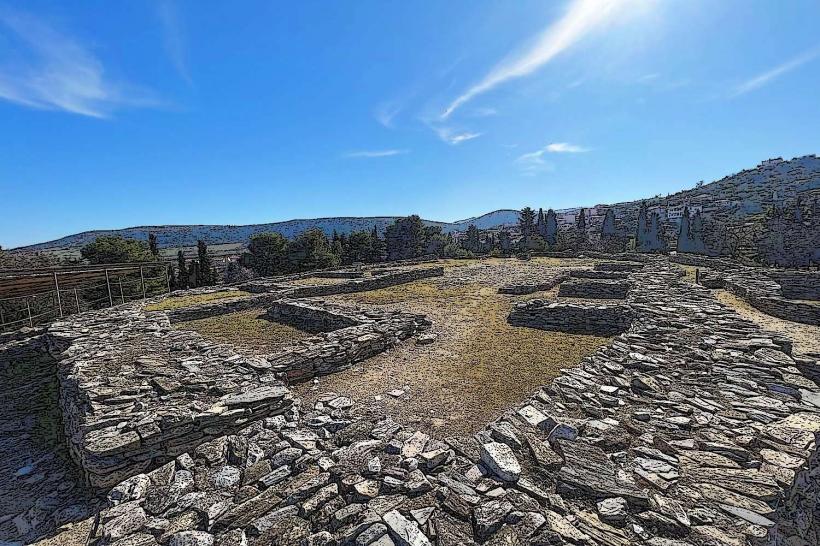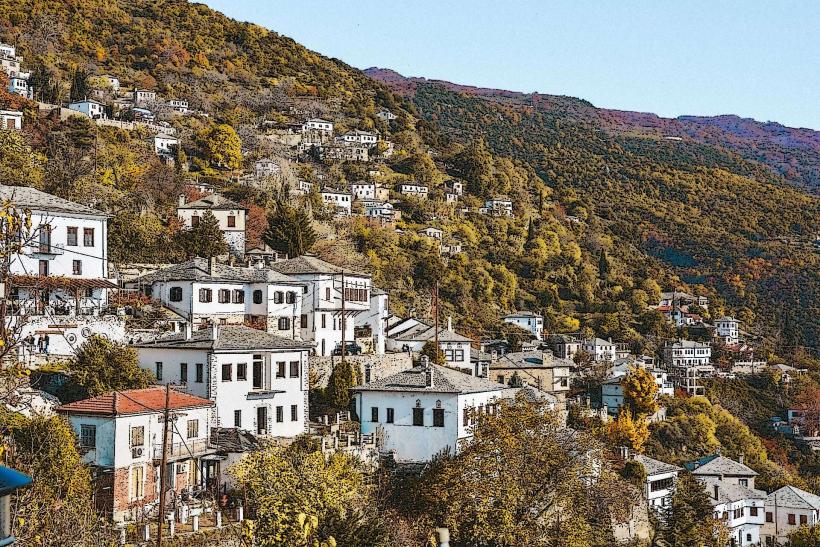Information
Landmark: Archaeological Museum of VolosCity: Volos
Country: Greece
Continent: Europe
The Archaeological Museum of Volos (Greek: Αρχαιολογικό Μουσείο Βόλου) is an important cultural institution located in the city of Volos, central Greece. The museum showcases the rich archaeological heritage of the region of Thessaly, with an emphasis on the prehistoric, Classical, Hellenistic, and Roman periods. Volos, strategically located between the Aegean Sea and the Pagasetic Gulf, has a long history, and the museum offers a comprehensive look at the area's ancient civilizations, from the Bronze Age through to the Roman era.
1. Museum Overview
- The Archaeological Museum of Volos is housed in a modern building that provides ample space for the exhibition of artifacts from various periods. The museum is renowned for its vast collection of ancient objects, including pottery, sculptures, tools, jewelry, frescoes, and inscriptions, many of which were uncovered from archaeological sites in and around Volos and the broader Thessalian region.
- The museum's exhibits are designed to present the history of the region in a chronological and thematic manner, allowing visitors to trace the development of ancient Greek culture from its prehistoric roots to its later phases.
2. Key Exhibits and Collections
The museum's collections span several significant historical periods, providing a deep dive into the region's cultural evolution.
Prehistoric Thessaly:
- The museum's prehistory collection is particularly strong, featuring finds from the Neolithic, Bronze Age, and Early Helladic periods. Thessaly played a crucial role in the development of early Greek civilization, and the museum displays artifacts from famous prehistoric settlements, such as Dimini and Sesklo, both of which are located in the broader Volos area.
- Key exhibits from these periods include:
- Neolithic pottery: The distinctive Sesklo style of pottery, known for its red and black designs, is prominently displayed.
- Figurines: Small ceramic and clay figurines, some of which are early depictions of humans and animals.
- Tools and Implements: Stone and bone tools used by the Neolithic and Bronze Age inhabitants of Thessaly.
- Artifacts from Dimini: Items from the Dimini archaeological site, which features tholos tombs and elaborate Minoan-influenced architecture.
Classical and Hellenistic Periods:
- The museum's Classical and Hellenistic exhibits explore the later development of Thessalian civilization as it interacted with the larger Greek world.
- Among the most notable items in this section are:
- Marble sculptures: Beautifully crafted statues from the Classical and Hellenistic periods, reflecting the importance of Volos (and Thessaly) as a cultural center.
- Vases and Pottery: High-quality Attic and Corinthian-style vases, many of which were used for everyday purposes, and others used in religious rituals.
- Inscriptions: Several stone inscriptions that document the life and politics of Thessalian cities during this era.
- Coins: A rich collection of ancient Greek coins that reflect the political and economic history of the region.
Roman and Byzantine Periods:
- The museum also contains a notable collection of artifacts from the Roman and Byzantine periods, reflecting the influence of Roman rule and the later Christianization of the region.
- Notable exhibits include:
- Roman statues and sculptures: Some of which are life-sized or represent notable figures of the time.
- Roman mosaics: Intricate and beautifully preserved mosaics that provide a glimpse into the art and decoration of Roman homes and public buildings.
- Byzantine relics: Religious icons, frescoes, and architectural fragments from churches and monasteries in the region.
- Artifacts from ancient theaters: Remains of ancient Greek and Roman theater masks and sculptures, highlighting Volos’ involvement in theatrical and cultural activities during Roman times.
3. Special Exhibitions and Events
- The Archaeological Museum of Volos frequently hosts temporary exhibitions, workshops, and educational programs designed to engage visitors and provide deeper insights into specific aspects of Thessalian history and archaeology. These events often feature collaborations with international museums, universities, and archaeological teams.
- Special exhibitions typically focus on specific themes, such as ancient Greek religion, art, architecture, or daily life, offering a more focused experience for museum-goers.
4. Architecture and Layout
- The museum itself is housed in a modern building that combines contemporary design with a thoughtful exhibition layout. The structure is designed to provide natural light and open spaces for the display of large objects, such as sculptures and statues.
- Inside, the museum is divided into several sections, with each section dedicated to a particular historical period or theme. Artifacts are displayed in a way that allows for both educational engagement and aesthetic enjoyment, making the museum an accessible and pleasant visit for all audiences.
- Additionally, the museum's design takes into account the need for conservation, with carefully controlled environments to ensure the preservation of the delicate artifacts.
5. Museum Collections and Research
- The Archaeological Museum of Volos is not just a place for displaying artifacts; it also serves as a hub for ongoing archaeological research. The museum works closely with excavation teams in the region, contributing to the discovery and interpretation of new finds from Thessaly and the broader area of central Greece.
- The museum’s collections include artifacts from various archaeological sites, such as Dimini, Sesklo, Volos, and Pelasgia, which help researchers study the historical developments of these areas.
- The museum also participates in broader archaeological networks and regularly publishes findings and research related to Thessalian archaeology.
6. Visitor Experience
- The Archaeological Museum of Volos is open to the public year-round, with varying hours based on the season. The museum offers detailed information in both Greek and English, making it accessible to international visitors.
- The museum has a shop that sells books, postcards, replicas of ancient artifacts, and other items related to ancient Greek culture and the museum’s collections. This provides an opportunity for visitors to take home a piece of the experience.
- The museum is also located in the heart of Volos, a city that offers a wealth of additional cultural experiences, including waterfront dining, local markets, and scenic views of the Pagasetic Gulf.
7. Nearby Archaeological Sites
- The Archaeological Museum of Volos is in close proximity to several other important archaeological sites in the region, including:
- Dimini: The ancient Minoan and Mycenaean settlement with impressive tholos tombs and prehistoric buildings.
- Sesklo: One of the earliest Neolithic settlements in Greece, offering insight into prehistoric life in Thessaly.
- Volos Archaeological Site: Remains of the ancient city, including public buildings, roads, and religious structures.
- Pelion Mountain Villages: The traditional villages in the foothills of Pelion, which provide a glimpse into the region’s long cultural and historical heritage.
8. Conclusion
The Archaeological Museum of Volos is an essential stop for anyone interested in the ancient history of the Thessalian region. With its rich collections from the prehistoric, Classical, Hellenistic, and Roman periods, the museum offers visitors a comprehensive look at the cultural evolution of this central Greek region. It plays a crucial role in preserving and interpreting the region’s archaeological heritage, making it a key institution for understanding the broader history of ancient Greece.



